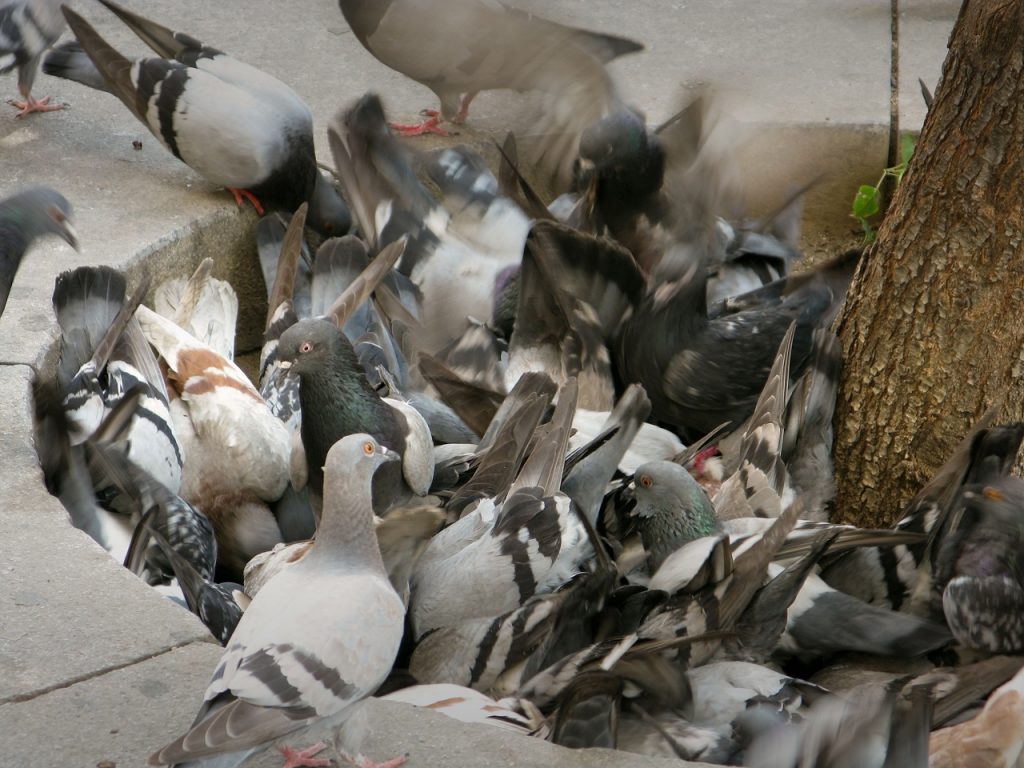Most of us can agree that a flock of pigeons flying around the church tower is a beautiful sight, and there is something nice about feeding the pigeons in the square. On the other hand, it is clear that they can be a serious nuisance when present in large numbers in places where we do not want them, and then we start calling them rats of the air.
Domestic pigeons originates from the rock pigeon (Columba livia). In the past, people bred countless varieties of domestic pigeons with all sorts of colours, shapes and properties. The pigeons we see in our cities look much like the rock pigeon.
Rock pigeons live along Western Europe’s coastal cliffs and deep in Asia’s mountainous regions. It has never lived wild in Scandinavia, and its descendants, our city pigeons, must cope with the artificial rock landscape that is our buildings.
They breed on the buildings where they can find suitable nesting places. The nest is very humble, often it is just a few sticks and perhaps a small piece of plastic in a cake of excrement.
The pigeons begin laying eggs in early spring, they lay only a few eggs but can do so 4-5 times every season. Both parents participate in incubation and later on also in feeding of the chicks. Pigeons feed their chicks in a very particular way. Their basic food are seeds of various kinds, and this is not optimal feed for chicks. However, a protein-rich liquid “pigeon milk” can be made of the seeds, when the adult squeezes them with its claws and chewing them with its beak.
Pigeons can be very troublesome. They mess with their droppings, their nesting materials can clog piping, and nests can be a breeding ground for mites and insects that we do not want in our homes.
Pigeons can also act as disease carriers. It is not common in western countries, but “pigeon dung” must be treated with care, and pigeons are not tolerated in food companies.
The most reasonable way to keep the pigeons’ numbers to a reasonable level, is by limiting their ability to breed. Primarily we have to prevent them from entering attics and other places where they can build nests protected from wind and weather.
Also exterior nesting and seating should be limited. Holes in a wall can be fenced with wire mesh and cornices can be inclined (more than 45 degrees). The pigeons can be kept away with steel or nylon threads, or with other systems (fakirs, pasta, etc.) traded for the purpose and usually installed by professional firms.
Scarecrows, aluminium foil, rotary mills, etc. generally only works for a very short time. Scare sounds are also not a very good method, as the pigeons get used to them. As well as other birds, pigeons have a bad sense of smell, so fragrances will not do either.
It is important to limit their ability to find food.
Traps are an option, the traps must be tended morning and evening and any chick must be killed. Nests and eggs should in all cases be removed as they can be a breeding ground for unwanted mites and insects.





